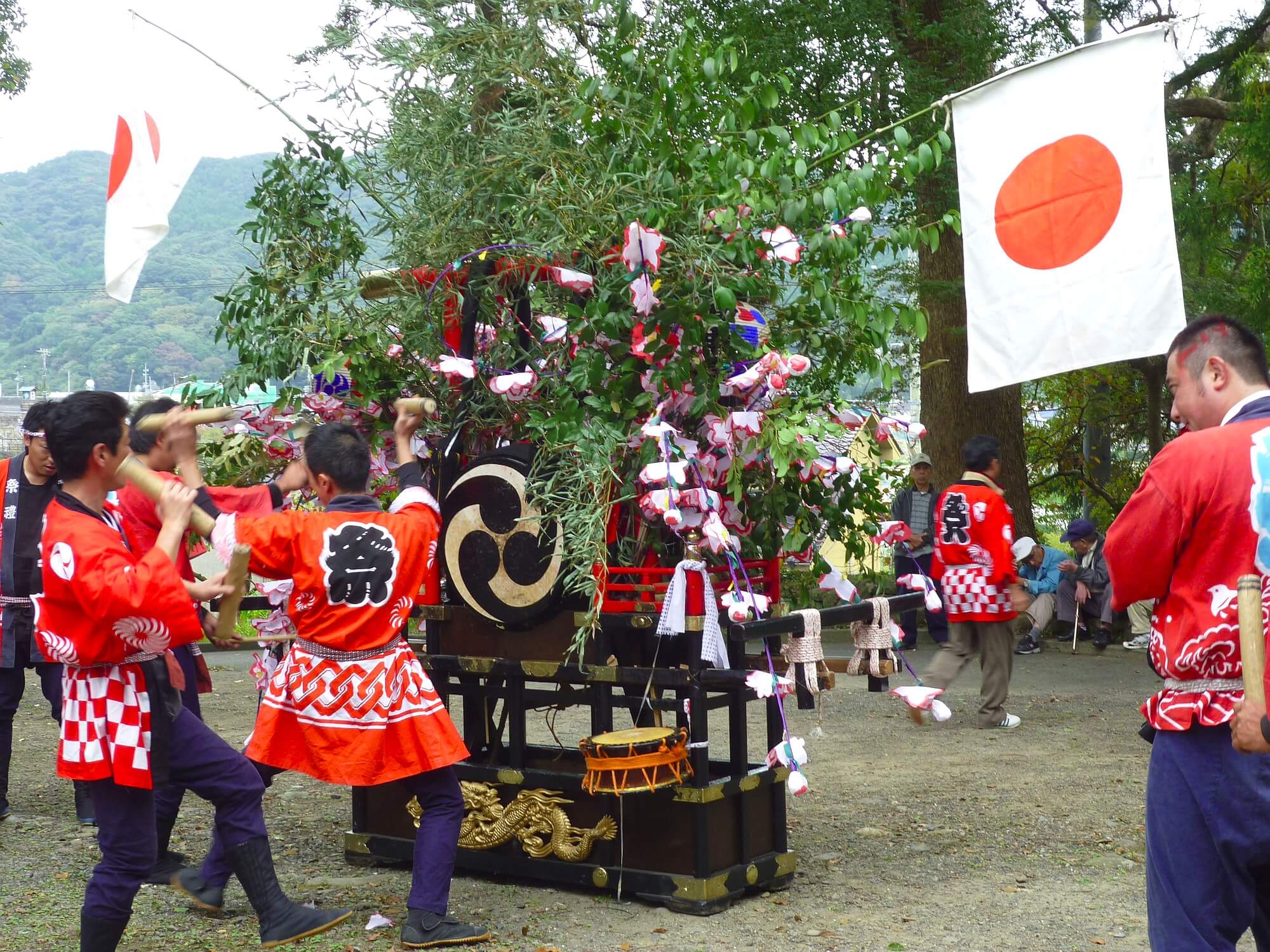The cover of An Imperial Concubine’s Tale is composed of two images. One is a painting of a courtesan (yūjo 遊女) by Kuwagata Keisai 鍬形蕙斎 (1764-1824) in the collection of the Musée Guimet in Paris. Here is what Kobayashi Tadashi 小林忠, Japan’s foremost scholar of Edo period art, has to say in his catalogue entry:
“Portrait of a Standing Beauty by Kuwagata Keisai (a.k.a. Kitao Masayoshi 北尾政美)
Bunka Period (1804-18)
Color on silk, hanging scroll
48.5 x 23.4 cm
Signed: “Painted by Tsuguzane” (紹実筆)
Artist’s seal: “Tsuguzane”
This figure of a courtesan in profile, with her distinctive tatehyōgo upswept hairstyle, is painted in bold, sweeping brushstrokes by Kitao Masayoshi, later known as Kuwagata Keisai, in the fluid style (sōga 草画) for which he was especially noted. Most likely, he wielded his brush while others looked on and the result was this impromptu composition. No doubt this feat, so quickly executed, was greeted with applause and sighs of admiration.”
Masayoshi was born the son of an Edo tatami mat maker. Named Sanjirō 三二郎, and nicknamed Sankō 三公 (Little Lord Three), he was a true child of plebian Edo. Later he would play upon this nickname to create a new sobriquet based upon the name of his neighborhood. He lived near the intersection of the street upon which the Sugimori Inari Shrine 杉森稲荷神社 faced and a street which ran past the terminus of a branch canal, Horidome-chō 堀留町. And so instead of writing his nickname with the characters for Three 三 and Lord 公, he used two different characters which shared the same pronunciation, one being the first character of the name of the shrine 杉 (Japanese cedar) and the other being a character meaning marsh or shallow body of water 皐, referring of course to the canal. Thus Sankō 三公 became Sankō 杉皐, in a bit of wordplay of the sort plebian Edo delighted in.
As Kobayashi Tadashi points out, in some ways Masayoshi’s career as an artist develops along exactly the same lines as his playful change of names. In 1794, the Kitao Masayoshi who, as a disciple of Kitao Shigemasa 北尾重政 (1739-1820), had been active in the commercial arena of “pictures of the floating world” (ukiyoe 浮世絵), was appointed artist-in-residence (o-kakae no eshi お抱えの絵師) to the Tsuyama domain, and thus achieved the equivalent of samurai status. Thereafter, calling himself Kuwagata Keisai, he devoted himself to the creation of paintings (nikuhitsuga 肉筆画) rather than woodblock prints. Just as Sankō 三公 had become Sankō 杉皐, Masayoshi developed into Keisai. During the course of his life, he managed to ride the currents of cultural change with great skill and overcome the handicap of his humble birth; he was a winner who rose through the plebian world of ukiyoe to become a major player in the culture of elegance.
Kobayashi Tadashi also notes that since Masayoshi uses his proper formal name “Tsuguzane” 紹実 in both the signature and seal on this painting, we may assume that the work dates from the period after his appointment as artist-in-residence. Keisai published many picture books, such as Ryakugashiki 略画式 (“Elements of Sketching”; Nihonbashi Muromachi: Suharaya Ichibei, 1795), which demonstrate his extraordinary abilities as an impromptu painter; the “dashed off” quality of his brushstrokes the picture books reveal is quite delightful.
Translated and summarized from the description of item no. 74 in Japanese Art: The Great European Collections, vol. 6: Musée Guimet, ed. Hirayama Ikuo and Kobayashi Tadashi (Tokyo: Kōdansha, 1994), p. 242. Additional information from the entry on Masayoshi in Ukiyoeshi den 浮世絵師伝 by Inoue Kazuo 井上和雄 (Tokyo: Watanabe Hangaten, 1931), p. 189. Many thanks to my colleague Ōmori Nobunori 大森信徳 for directing me to Inoue Kazuo’s collection of biographies.
The second image on the cover of An Imperial Concubine’s Tale is a dragon. As I explain in the book, one name for the scandal Nakako got herself involved in is the “dragon-scale scandal” (gekirin jiken 逆鱗事件), after the imperial=dragon’s rage that was unleashed. By an odd coincidence, the float (dashi 山車) that on festival day every year is carried around the village of Nijō, where Nakako spent her years of exile from the court, is decorated with a golden dragon. You can see a photograph of the portable shrine here:

And a close-up of the dragon here:

Both photographs of the float were taken in the grounds of the Mishima Shrine in Nijō, near the end of the annual festival on 2 November 2011.
